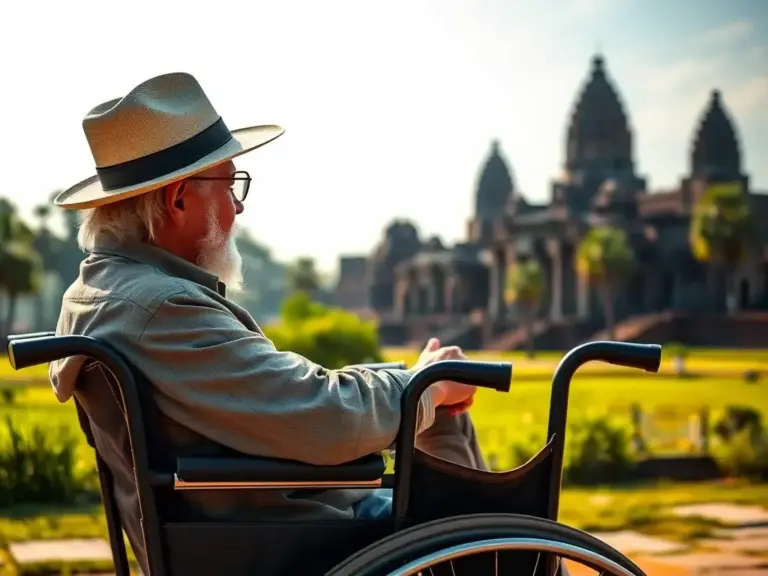You’re likely familiar with the phrase “Health and Safety First.” It’s more than just a saying; it’s a fundamental principle for living well. This idea isn’t just for workplaces; it applies to every part of our daily lives.
We’re talking about actively protecting ourselves, our families, and our wider communities. It’s about taking steps to prevent accidents, avoid illnesses, and generally boost our well-being. Thinking this way helps everyone stay safer and healthier.
Understanding Everyday Risks: Home, Work, and Play
Life often feels busy, and it’s easy to overlook small dangers lurking in our everyday surroundings. However, recognizing these common risks at home, in the workplace, and whenever we’re out and about is a key step toward staying safe and healthy. Being aware helps us take simple actions that can prevent accidents and injuries.
Safety in the Home: Protecting Your Sanctuary
Your home should be a safe haven, but it often holds hidden dangers. Everyday items can pose risks if we are not careful. Think about potential fire hazards, such as faulty electrical wiring or cooking left unattended on the stove. These situations can escalate quickly, so regular checks are important.
Slipping and falling are also common home accidents. Wet floors, cluttered stairs, or loose rugs can all lead to tumbles. Keeping pathways clear and cleaning spills right away makes a big difference.
Consider how you store chemicals, too. Cleaning supplies, medicines, and even garage fluids should be kept in their original containers and out of reach of children or pets. For families with young ones, child-proofing is essential. This includes outlet covers, cabinet locks, and securing furniture that could tip over.
Two crucial safety devices in any home are smoke detectors and carbon monoxide detectors. You should test these monthly and change batteries at least once a year. A well-maintained home environment isn’t just about appearance; it’s about protecting everyone who lives there.
Workplace Wellness: Prioritizing Employee Well-being
Safety standards extend to your job, no matter what kind of work you do. A safe workplace benefits everyone, from the employees to the company itself. For office workers, ergonomic considerations are key. This means setting up your desk, chair, and computer to support good posture and prevent strain. Simple adjustments can avoid long-term discomfort.
In jobs that involve physical labor, proper equipment handling is critical. Knowing how to safely operate machinery, lift heavy objects, and use protective gear prevents injuries. Training sessions are not just a formality; they are vital for learning these safe practices.
Beyond physical safety, mental health support is an important part of workplace wellness. Stress, burnout, or other mental health challenges can affect productivity and overall well-being. Companies that offer resources like counseling services or flexible work arrangements show they care about their team.
It is also everyone’s responsibility to report any hazards they notice. If you see a spill, a broken tool, or an unsafe process, speaking up can prevent accidents. A strong safety culture in the workplace leads to fewer injuries, higher morale, and better productivity for everyone.
Outdoor Adventures and Public Spaces: Staying Safe
When you step outside for recreation or simply to get around, a different set of safety considerations comes into play. Enjoying the outdoors means being prepared and aware of your surroundings. For instance, sun protection is a must. Wearing sunscreen, hats, and sunglasses prevents sunburn and reduces long-term skin damage.
Staying hydrated, especially during physical activities or warm weather, prevents heat exhaustion. Always carry water with you. If you are walking or cycling, traffic safety is paramount. Obey all traffic laws, use crosswalks, and make yourself visible to drivers, especially at dawn or dusk.
Awareness of surroundings is important in any public space. Pay attention to people, vehicles, and potential hazards. Keep your valuables secure and avoid distractions like looking at your phone too much. For longer outdoor excursions, like hiking or camping, having basic first aid readiness is smart. A small first aid kit and knowing basic injury care can be invaluable. Being ready for the unexpected helps ensure your outdoor experiences are safe and enjoyable.
Building a Culture of Health and Safety: Practical Steps
After understanding where risks exist, the next step is to actively build a culture where health and safety are priorities. This means taking direct, practical actions in your daily life. It is not just about avoiding danger; it is about creating an environment that supports your well-being and protects those around you. We can all contribute to a safer world by adopting clear habits and making informed choices.
The Power of Awareness and Education
Education is truly your first line of defense against many hazards. The more you know, the better prepared you are to handle different situations. Staying informed about best practices, understanding warning signs, and participating in safety training programs can make a real difference. For example, learning about basic first aid equips you to respond effectively to minor injuries. Similarly, understanding the proper way to use tools or handle certain chemicals reduces the chance of accidents.
Knowledge empowers you to make safer choices every day. It helps you identify potential threats before they become serious problems. Think of it as developing a sixth sense for safety. This awareness prevents small issues from escalating into larger ones. Continuous learning about safety, whether through online resources, community workshops, or workplace training, keeps your skills sharp and your mind prepared.
Developing Emergency Preparedness Plans
Being ready for the unexpected brings immense peace of mind. Creating personal and family emergency plans is a crucial step in building a strong safety culture. These plans help you react calmly and effectively when unforeseen events occur.
Consider including these elements in your plan:
- Emergency Kits: Assemble a kit with essential supplies like a first aid kit, water, non-perishable food, flashlights, and a battery-powered radio.
- Evacuation Routes: Know the quickest and safest ways out of your home or workplace in case of a fire or other emergency. Practice these routes.
- Meeting Points: Designate a clear outdoor meeting point for your family in case you need to evacuate.
- Emergency Contacts: Keep a list of important phone numbers for emergency services, family members, and neighbors.
Being prepared for natural disasters, unexpected medical situations, or other emergencies ensures everyone knows what to do. This proactive approach helps protect you and your loved ones when it matters most.
The Role of Personal Responsibility and Accountability
Every individual’s actions contribute to overall health and safety. It is not something solely imposed by regulations; it is a shared responsibility. When we all take personal accountability, our communities become safer and healthier.
This involves several key behaviors:
- Following Rules: Adhering to safety guidelines, whether at home, work, or in public spaces, prevents accidents.
- Using Protective Equipment: Wearing helmets, safety goggles, or other gear when needed significantly reduces the risk of injury.
- Avoiding Unnecessary Risks: Thinking before acting and assessing potential dangers can prevent many avoidable incidents.
- Looking Out for Others: Being aware of your surroundings and pointing out hazards to others helps protect everyone.
Embracing “Health and Safety First” means being proactive in your own safety and the safety of those around you. It fosters a collective mindset where everyone is a guardian of well-being. Your commitment makes a tangible difference in creating a safer environment for all.
The Upside of Living Safely: More Than Just Avoiding Harm
Prioritizing health and safety isn’t just about sidestepping problems. It is about actively improving your life. By making smart choices and being prepared, you unlock a wealth of positive outcomes. Think about it: a commitment to safety leads to greater freedom and reduces worries. It allows you to truly enjoy life, knowing you have taken steps to protect yourself and those you care about.
Improved Well-being and Quality of Life
Imagine a life with fewer unexpected upsets. That is one of the biggest rewards of a safety-conscious approach. When you adopt safer habits, you naturally experience fewer injuries and illnesses. This translates directly into less physical pain and stress.
Consider the simple act of checking your smoke detectors. This small effort can prevent a devastating fire, saving your home and memories. Fewer accidents mean you can spend more time doing what you love, rather than recovering or dealing with medical appointments.
A safer life also helps your mental and physical health thrive. When you reduce risks, you feel more in control. This can lower anxiety and provide a greater sense of peace. You gain the freedom to pursue hobbies and activities without constant worry. This leads to a fuller, happier existence, where you can fully engage with life’s joys. Ultimately, a focus on safety helps you achieve a higher quality of life and makes every day more satisfying.
Financial and Societal Advantages
Beyond personal well-being, a commitment to safety brings significant financial and community benefits. Think about how many problems are avoided when people act safely. This ultimately reduces healthcare costs for everyone. Fewer accidents mean fewer emergency room visits, hospital stays, and costly treatments.
For you personally, prioritizing safety can mean lower insurance premiums. Car, home, and even health insurance companies often reward responsible behavior. Less time off work due to preventable injuries also means more income and stability for your household.
On a larger scale, when individuals prioritize safety, society becomes more productive and resilient. Fewer lost workdays boost the economy. Communities save money on emergency services and long-term care. Every safe choice contributes to a stronger, healthier collective. It creates positive ripples that extend throughout neighborhoods and workplaces. Your individual commitment to safety truly helps build a more stable and prosperous shared future for everyone.
Conclusion
Prioritizing health and safety is a continuous journey, not a destination. It means making mindful choices every day to protect yourself, your loved ones, and your community. By staying aware, preparing for emergencies, and taking personal responsibility, you create a safer environment. This approach not only prevents harm but also significantly improves your overall well-being, leading to a happier and more stable future. Let’s all commit to a “Health and Safety First” mindset now and for years to come.






